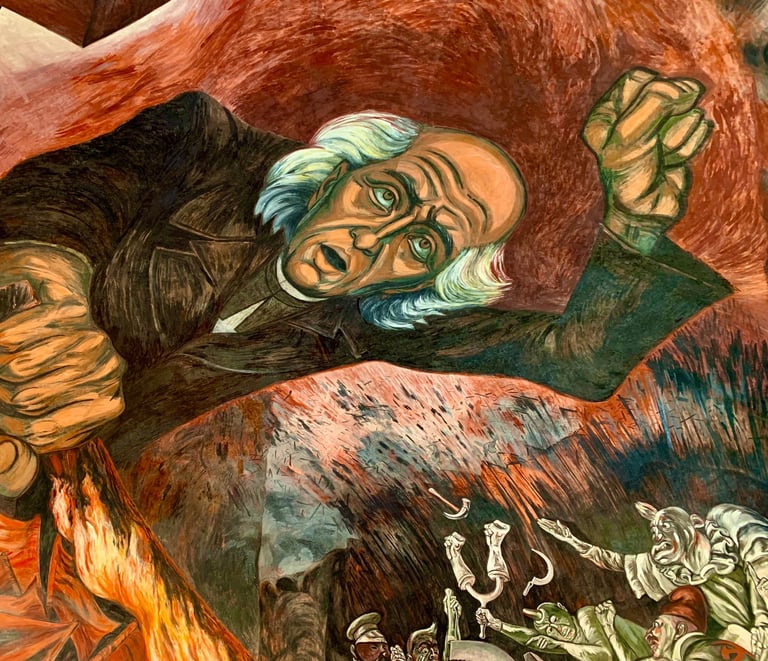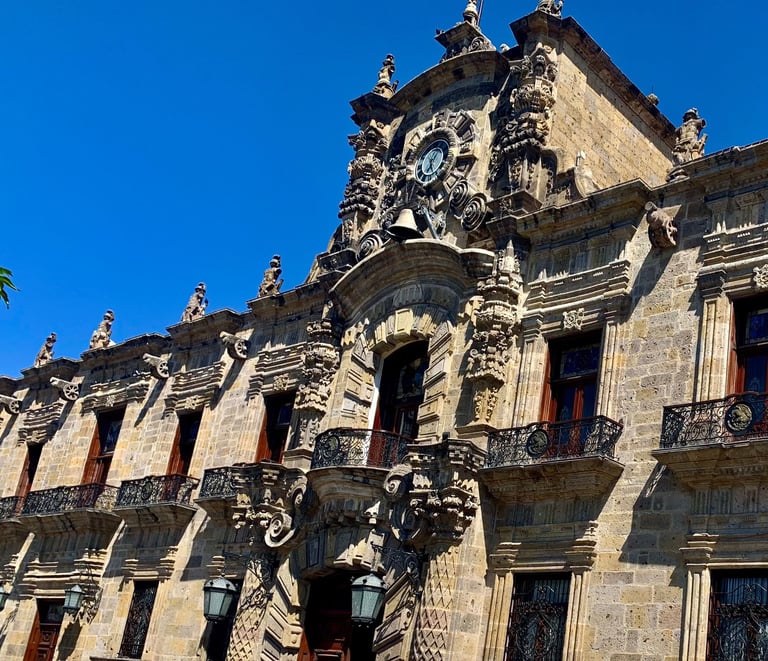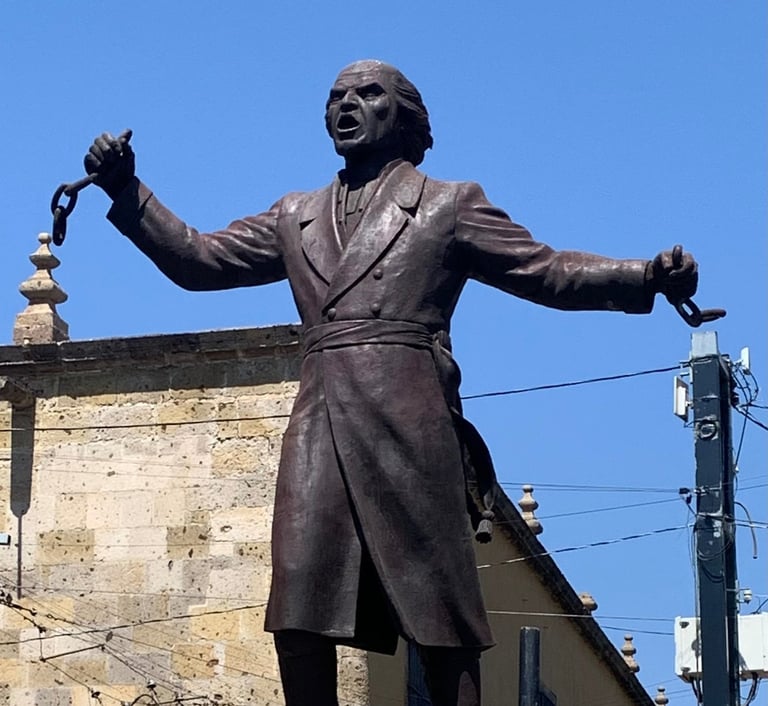Father Hidalgo in the Government Palace of Guadalajara


Construction of Palacio de Gobierno (Government Palace) began in 1774 and it was inaugurated in 1790. During the 19th century, it housed the Mexican parliament and is the only building in the Historic Centre of Guadalajara that was created as a fortress for protection and safekeeping.
In this building, you will find the famous giant mural portrait of Hidalgo, a Spanish Roman Catholic priest, who is considered the father of the Mexican independence movement against the Spanish that lasted a brutal 10 years from 1810 to 1821.
The giant 400 square-meter mural, “Hidalgo and National Independence”, was completed in 1937 by renowned Mexican artist, Jose Clemente Orozco, and is featured on a vaulted ceiling overlooking the main staircases of the main courtyard (see photo).
Hidalgo holds his fist up in solidarity with many Mexican soldiers and civilians fighting for independence from Spanish colonial rule. He also appears to protect against the forces of communism and fascism, albeit anachronistically, as these political movements would emerge in other parts of the world much later.
While subject to multiple and layered interpretations, some interpretations suggest that Orozco sought to both praise and criticize Hidalgo in this mural. Praise him for his role in encouraging an Indigenous rebellion to fight for independence; and criticize him for being a Catholic priest contributing to their oppression through religious indoctrination. This giant mural is incredible and should not be missed.
It was also here in this building that Hidalgo first issued a decree abolishing slavery in 1810. Eventually, slavery was officially outlawed by congress in 1837, nearly 30 years before the United States did so in 1865. In Plaza de la Liberation, a Statue of Hidalgo stands tall as a monument to his decree abolishing slavery in 1810 (see photo).




